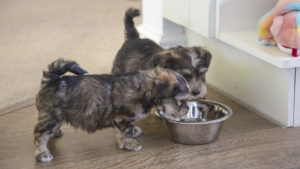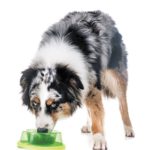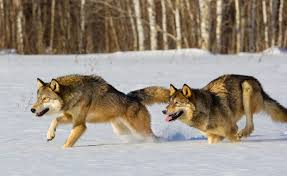Your Perfect Dog – communication is key!

Your perfect dog.
Everyone wants their dog to be perfect, but most of our dogs have got problems. For your perfect dog – communication is key! We have two dogs ourselves and neither of them are perfect. But if we can only learn to communicate with our dogs, we can improve their lives along with our own.
Is your dog naughty?
Many owners consider their dogs to be ‘naughty’ or ‘badly behaved’ but we must realize that canines react to stimuli and do not know how to be ‘vindictive’ or ‘vengeful’. Dogs live in the moment, unlike us humans who seem to live in the past, the present and worry about what’s going to happen in the future.
Dogs can teach us how to live!
Our negative or positive thoughts have a profound affect on our dogs. They are completely tuned in to our emotions and this is the key to communicating with our canine friends. As Cesar Millan says “you don’t get the dog you want, you get the dog you need!”

Do you want to know your dog?
If you really want to know how your dog thinks and why he may be exhibiting behaviour you don’t like, get in touch. With knowledge about your dog’s traits, characteristics and why he acts as he does, we can learn to adjust his behaviour to ensure you have a well mannered dog. He will be a happy canine who will enhance your life and the lives of those around him.

I am a dog behaviourist, not a trainer
Please note I am not a trainer, I am a dog behaviourist. I will assess the problem behaviour your dog is exibiting and suggest a solution. You will then be shown how to implement that solution and prevent the behaviour. Every dog is different and one dog’s solution may not suit another dog. The initial consultation will take at least 2 hours. This is so I can see how your dog reacts to stimuli and how he is in his home environment and out on a walk.
So what kind of behaviours are we talking about:
Some behaviours are more ‘unwanted’ than others. Below is a list of those that are particularly troublesome to owners and canines:
-
-
- Separation anxiety
- Pulling on the lead
- House training
- *Food aggression
- *Fearfulness

- Mouthing or biting
- *Jumping up
- Dog to dog aggression
- Recall
- Resource guarding
- Barking
- Chewing

- Digging
- Begging
- Coprophagia (eating poop)
- Phobias and obsession
-
*images – fearfulness, food aggression and jumping up
A litte bit of history for you
Canines are pack animals. Animals that live in a pack, such as wolves, have a tight social structure, living in family groups, with a pecking order or hierarchy. They hunt as a pack, with a strong, mentally agile, high energy wolf usually taking the top spot as pack leader, the Alpha male. He is often supported by his mate, the Alpha female. According to research, a female is just as likely to be the pack leader as a male.
The domestic dog
Domestic dogs like to know their place within their ‘human pack’, just like a wolf pack. Dogs are playful and seem to enjoy an exuberant play fight with a dog pal or sibling. They will scent mark their territory to inform other dogs of their presence. Many breeds, such as Border Collies and Greyhounds have a strong prey drive. These traits are in common with wolf behaviour.
 Wolf to domestic dog
Wolf to domestic dog
It is suggested that it was about 100,000 years ago that dogs changed direction genetically from the wolf. As for their interaction with humans, perhaps they were enticed into the camps by the smell and promise of food. In lean times, it may have been their hunger that overcame their caution. Dogs are renowned for having opportunistic tendencies. I think this is the most likely start of human association with dogs, rather than them being enslaved in the first instance. From skeletons found from 14,000 years ago, the jaw was shown to be different than that of a typical wolf. The jaw was shorter with more crowded teeth. This is evidence of change. Even so, much of a dog’s DNA is the same as the wolf.

The truth on a DNA level, is that the same DNA sequences as wolves are found in all our modern pure breeds, except for Norwegian breeds such as the Norwegian Elkhound whose DNA has ancient origins.
In Roman times
In Roman times, there were just 6 different types of dogs as follows:
- Villatici – house or guardian dogs
- Pastorales Pecuarii – shepherd dogs
- Venatici – sporting dogs
- Pugnaces and Bellicosi – war dogs
- Nares Sagaces – scent hounds
- Pedibus Celeres – sight hounds
By the year 1800, there were still only 15 distinct breeds, all of which were recorded in an encyclopaedic compendium of dog breeds in Britain.

About the Dingo
Because no dog fossils have been found in Tasmania, it is assumed that the Dingo didn’t exist 12,000 years ago, when Tasmania broke away from the mainland of Australia. The oldest fossils ever found in Australia are thought to date back to 1500 BC. Dingo bones were excavated in the 1960s from the Madura Cave on the southern edge of the Nullarbor Plains, SW of Western Australia (1060 km east of Perth). They have very recently been re-evaluated using accurate radiocarbon dating and found to be between 3348 and 3081 years old. (Scientific Reports volume 8, Article number: 9933 (2018)
As for the 400+ breeds we have now…
Those dogs that had certain traits, were utilised to help humans improve their living, daily chores and jobs. Those prone to barking a lot were used as guard dogs. The smaller short legged dogs were used for flushing out, rabbiting etc.. The sleeker longer legged faster animals were better at chasing and hunting. A high prey drive could be channelled into using the dog for herding, such as our modern ‘Pastoral’ group of dogs today.

But unfortunately…
There were those breeders that decided to breed dogs to look a certain way. This was with no thought of the dog’s welfare. Now we have many breeds suffering various problems with breathing, skin complaints, eye problems, hip dysplasia etc.. Also in-breeding has caused problems in many breeds. Here are 5 susceptible breeds that come to mind:
- The Pug – The following health problems taken from petMD. The Pug is prone to major health problems like Pug Dog Encephalitis (PDE) and canine hip dysplasia (CHD), as well as minor concerns like elongated palate, patellar luxation, stenotic nares, Legg-Perthes disease, entropion, keratoconjunctivitis sicca (KCS), hemivertebra, obesity, and skin infections. Nerve degeneration, demodicosis, seizures, distichiasis, and allergies are occasionally seen in this breed of dog. Its facial wrinkles must be kept clean to prevent skin fold dermatitis, a form of skin inflammation. The Pug is also sensitive to heat and anesthesia.
- The Bulldog – Again, according to petMD. Heat stroke is more common with this breed. Some of the major health problems the Bulldog is susceptible to are keratoconjunctivitis sicca (KCS), ventricular septal defect, canine hip dysplasia (CHD), shoulder luxation, internalized tail, stenotic nares, and elongated soft palate.
- The Shar Pei – According to ‘vetstreet’ The Shar-Pei has many health issues, and Shar Pei owners may develop a close relationship with their veterinarian. Concerns include hip and elbow dysplasia; patellar luxation; hypothyroidism; eye problems such as entropion, retinal dysplasia and glaucoma, allergies; and skin fold infections.
- The Pekingese – Health problems include (according to a pet insurance company) brachycephalic airway syndrome, which causes breathing difficulty; intervertebral disc disease; eye diseases; early-onset heart murmurs; and syringomyelia.
- Cavalier King Charles Spaniel – and again, according to petMD, patellar luxation, and entropion, or major problems like, mitral valve disease (MVD), and canine hip dysplasia (CHD). Sometimes retinal dysplasia is seen in the breed. This Cavalier King Charles has Syringomyelia. Small breeds are more susceptible to this disease.

Do your research and be aware
Suffice to say, it is a good idea to thoroughly research the breed of dog you intend to acquire. Remember, it is common knowledge that cross breeds are less likely to have health problems because of the extended gene pool the offspring come from. If the dog you have is one of those prone to health problems, forewarned is forearmed!
Contact and Fees:
Go to Contact and Fees: to find out about more about my ‘no fix no fee’ promise. Fill in the form and I may be able to give some advice over the phone. Otherwise I can visit you at your home. I will happily visit within a 50 mile radius of Builth Wells, Powys, Wales.

Wow, I ended up learning a lot from this post here. It’s very interesting how the dogs we have can think and live. I own a crossbreed and he doesn’t give me so much health concerns like you said here even though I just got him a few months ago. From your post, I was able to learn a host of things about dogs and their history too. I didn’t know that they were from the wolves pack and that they separated themselves. I also learnt about their attitude and the importance of communication to help get a desired result of a perfect dog. Thanks!
Hi there Henderson, yes the crossbred dog is much less likely go have health problems, unless you’re unlucky. Although all dogs have wolf dna, they have lost much of their wolf tendencies. But as with all variations, each dog will exhibit more or less ancient traits. This is why man decided to interbreed, so he could increase certain traits to suit his needs. Learning dog language will only bring you closer to understanding your dog. Remember he’s instinctual most of the time and will never be vindictive or ‘get his own back’ on you. It’s just not in his dna. This knowledge gives us the capacity to be more tolerant of their unwanted behaviours and patient with their training.
Hello there, thanks for this post. My dog is indeed a darling and before now she always got angry and sometimes become aggressive, but after a series of observations I noticed all she needs most time, is for someone to give her attention and you’ll know just what she needs. I’ll say having a bond with ones buddy is a really important thing and with that they will be the perfect guy
Your dog sounds like a little sweetheart and she surely enhances your life. Dogs get more frustrated than angry. They need to be challenged mentally and exercised regularly and that means at least twice a day! If she gets over excited or aggressive with you, take her out for a walk, making sure she is calm before you leave the home. An excited dog leaving home will stay excited during the walk. If you are calm, she will likely pick up your mood and calm down herself.
I suspect she is an intelligent dog and needs plenty of mental and physical stimulation. Make sure you give her a structured walk ie. walk on the lead for the first part, then let her sniff and play. Let her off lead if she has good recall. End the walk on the lead. Always praise her to stand still while you put the lead on and take it off. If she is not good at walking next to you without pulling, teach her at home first. You are more relaxed at home therefore so she will be. Good luck and not hesitate to get in touch if you need advice. I always answer my comments
What an excellent article about what to expect from your dog and what your dog expects from you! Its too true that dogs live in the moment and we could certainly take a page from their books. The inbreeding problems that you mention affect so many breeds. Humans have bred different breeds but this could only be done with inbreeding and that always causes problems. German shepherds are also a prime candidate for hip dysplasia. I do wish that I lived nearer to you as my dog is so excitable its very difficult to keep him from jumping on people and as he is a Great Pyranese x Burmese Mountain Dog cross he is a very large dog!
Yes Feochadan, German Shepherds certainly do get a lot of hip dysplasia. I’ve had a Pyrenean Mountain dog myself and he was a joy. One crossed with a Burmese must be a beautiful animal. Both of these dogs are gentle giants so you have to teach them manners. Keep a short lead on him when in the house so you can gently pull him off you and your guests when he gets too boisterous. Put him in ‘time-out’ for a few minutes when he does this behaviour. Also get your guests to ignore him until he settles and I mean no talk, no touch, no eye contact.
He will hate being away from you all and will soon get the hang of it. He will soon learn that jumping and being excited gets him nowhere except away from those he wants to be with. He should start to settle after a few time-outs. Do not let him take your space. Much better to walk into his space and kind of ‘herd’ him quietly away. Keep calm and assertive at all times. Don’t let him push through the doors first or charge up and down stairs first. He must be respectful of you at all times. Good luck and get back to me if you want advice. I always answer comments.
Wow! So much more to know about dogs. The historical part is really knowledge enriching and I appreciate every bits of it. I never knew that we initially had only 6 breeds of dogs neither do I know that dogs have the same DNA with wolves. But how come we have so many breeds of dogs these days when they were just 6breeds before? That sound a little bizarre to me. Also, reading about communication between us and our dogs is spot on. My dog, Shelly is very naughty but she has taught me a lot of things especially on how to be sociable. She plays a lot and she is very accommodative. I wish she can talk, we would have been the best of friends
Hi Ramos, the reason there are so many breeds is because of mankind. We have specifically bred dogs for certain jobs to help us in our lives. Of course, those dogs will then breed with each other. From the year 1800 when there were just 15 breeds, we, as a species, have increased specific breeds to over 400!
Shelly is always talking to you Ramos, you just need to work out what she’s saying. When you do that, your relationship will be enriched for both of you. Good luck!
Hi
Thank you for writing that interesting article but in a similar way a perfect human being does not exist, then a perfect dog will also not exist. I really like how you highlight the potential problems dogs can have and as long as people are aware of this , will make it easier for the owner to deal with. A prepared owner is a caring owner, who will give the dog the love and attention they rightly deserve. I often wondered how owners select the dog breed they wish to buy, as there is a wide selection. I often say it is best to go for a dog that you first fall in love with and work around the breed. My question to you, what is your opinion if a dog suddenly attacks a child, what should be done in this situation?
Thank you
Antonio
Hi Antonio and thanks for your input. Who decides who and what is perfect anyway? It’s subjective. The point is, you need to decide what is perfect for you. Which behaviours will you tolerate and which behaviours are unwanted for you. If you don’t mind your dog digging in the garden, that’s fine. If you have a landscaped garden with beautiful flowers and bushes, you may want to curb your dog’s digging.
As for your question about a dog that bites a child, this is a difficult one. If you don’t know the circumstances of the bite ie. the dog and child were alone, then it’s difficult to know what happened. Was the dog tormented by the child or did the dog attack for no apparent reason. Was the dog in pain and bite the child because he wanted to be left alone. It is difficult to trust a dog once it has attacked and bitten but often there are reasons for the attack. Unfortunately, if you don’t know the reason then the dog is in trouble, probably through no fault of his own.
It is very rare that a dog will attack for no reason, but if you don’t know the reason then you’ve got no way of solving the problem. Has he bitten anyone else before? Has he shown signs of aggression. Was there food down which he was eating? So many variables. I would suggest you get the help of a really experienced dog behaviourist who will advise you on the best course of action.
It’s funny that you mentioned that everyone thinks their dog is well behaved when most of them are not. I can totally relate to that statement. I know tons of people who have it in their minds that their pups are saints when really, they all have their cracks. My mom’s Yorkshire terrier all of a sudden has anxiety when she’s in the car. I’m not sure what it’s from or where, but she won’t stop panting hard the entire time she’s in there. I think a lot of it is my mother feeding into her anxiety rather than ignoring it. When my dog was alive, I always found that the more trust I had in her and the more relaxed I was in certain situations where I had normally been stressed, the better her behaviour was. Like if I was stressed about her approaching another dog in a leash-free park, she would have an altercation with another dog. But if I was relaxed about it, she would just sniff but and then walk away. It’s funny how much they feed off of our behaviours! Great article!!
Hi Nicki and thanks for your comments. As for your Mum’s little dog, there is obviously a reason for her anxiety. But no matter the reason, you need a solution. You are probably correct about your Mum being anxious and feeding that anxiety to her dog. I would suggest that you try and get Mum to learn to relax. Put the dog in the car and then take her straight out again without going anywhere. Get in the back seat with the dog following and get straight out the other side. If the dog is calm and relaxed about it, reward with a treat. Do not reward if she is still stressed, that can only make her anxiety worse because you’re rewarding it.
Your Mum could just sit in the car without turning the engine on, perhaps with the radio playing softly in the background. This will keep Mum calm as well as her dog. Baby steps is the answer, I think you get the idea. Just don’t rush it and if she starts getting anxious go back to the previous step. Good Luck. PS If the dog doesn’t improve, employ the services of a dog behaviourist.